(Made 1643 – The Hague 1706)
Young fischer
Oil on panel in one board
H. 32.5 cm; L. 25.5 cm
Around 1670/75
Related works:
- Autograph version with numerous variants, Berlin, Gemaldegalerie, Inv. N°837
- Copy or workshop version of our painting with slight variations but of inferior quality, Germany, sold at Berlinghof Auktionshaus in 2002
The object of this notice is not to produce a biography of Schalken, the reference work by Thierry Beherman published by Maeght in 1988. The goal here is to understand this version of a painting of formidable craftsmanship and to compare it to the work preserved in Berlin with its many variants in order to draw some hypotheses for conclusions
Our young angler is a very interesting subject that can be found as early as the 16th century to invoke one of the four temperaments. Not melancholy as one might think at first glance, but phlegmatic character. The interpretation of astrological symbols closely linked peach and phlegm, laziness, slowness, often represented alongside the moon. Here the composition is very clear in this sense. The young man, chin resting on his arm, looks at his modest cane, the cork of which he soaks alongside snails and butterflies located in the Irises. All near a willow under a heavy sky, like a night sky. All the elements are there to give an explanation of the subject and not to leave the spectator in front of a simple genre scene. Let's go back to the willow, a tree that loses its fruits before they mature. It is often considered a symbol of lost youth, a reference to passivity or times of debauchery. Plato advised in his time to banish fishing from the education of children since it is an activity of expectation and not of exercise or reflection. Needless to explain the presence of small slow-moving animals with short lives or flowers… The image speaks for itself!
Let's go back to the differences between the Berlin version and ours, of which it must be recognized that the quality is slightly lower and therefore can hardly be given with certainty to Schalken itself. This version has some additional elements compared to ours. In our version, the row of willows cut into trunks located to the left of the composition is replaced by a simple area of reeds that opens up to a luminous sky. The sky is also different by the clouds represented. A white butterfly flying in the middle of the Irises has been removed, as has a large leaf located on the back of the young fisherman at the foot of the willow. Only addition to our table in addition to the Berlin version: a second fish near the earthen pot. What can we conclude from these variants? A version commissioned from Schalken, simplified and produced in part by the master for the flowers, the animals and various details, then entrusted to one of his best students for the backgrounds? In any case, this panel was seen later since a copy exists, sold on the art market in Germany in the early 2000s, from which this time the second fish was removed.
Be that as it may, the quality of our painting is undeniable and its small size added to the typically Dutch light make it a formidable object.


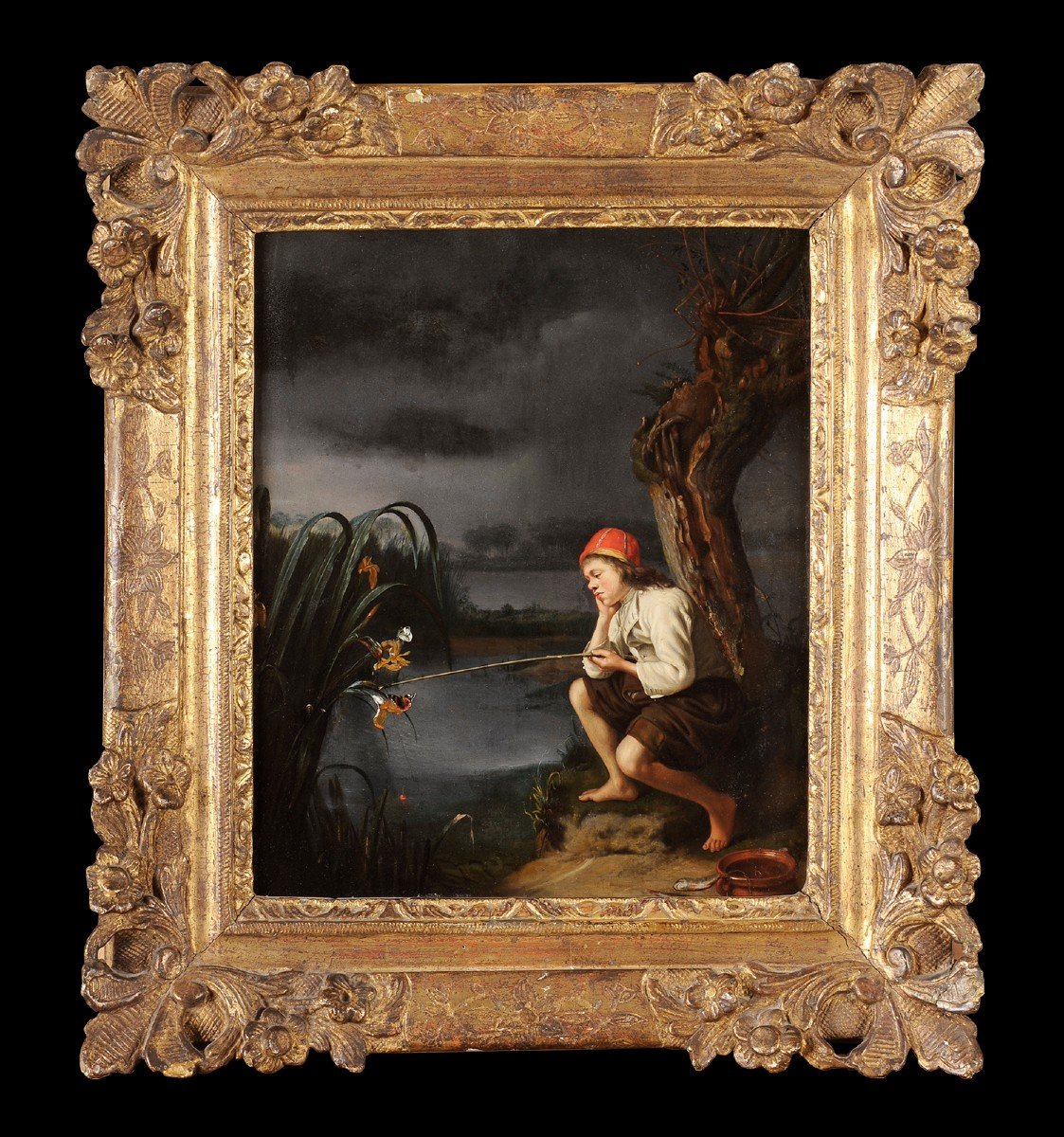
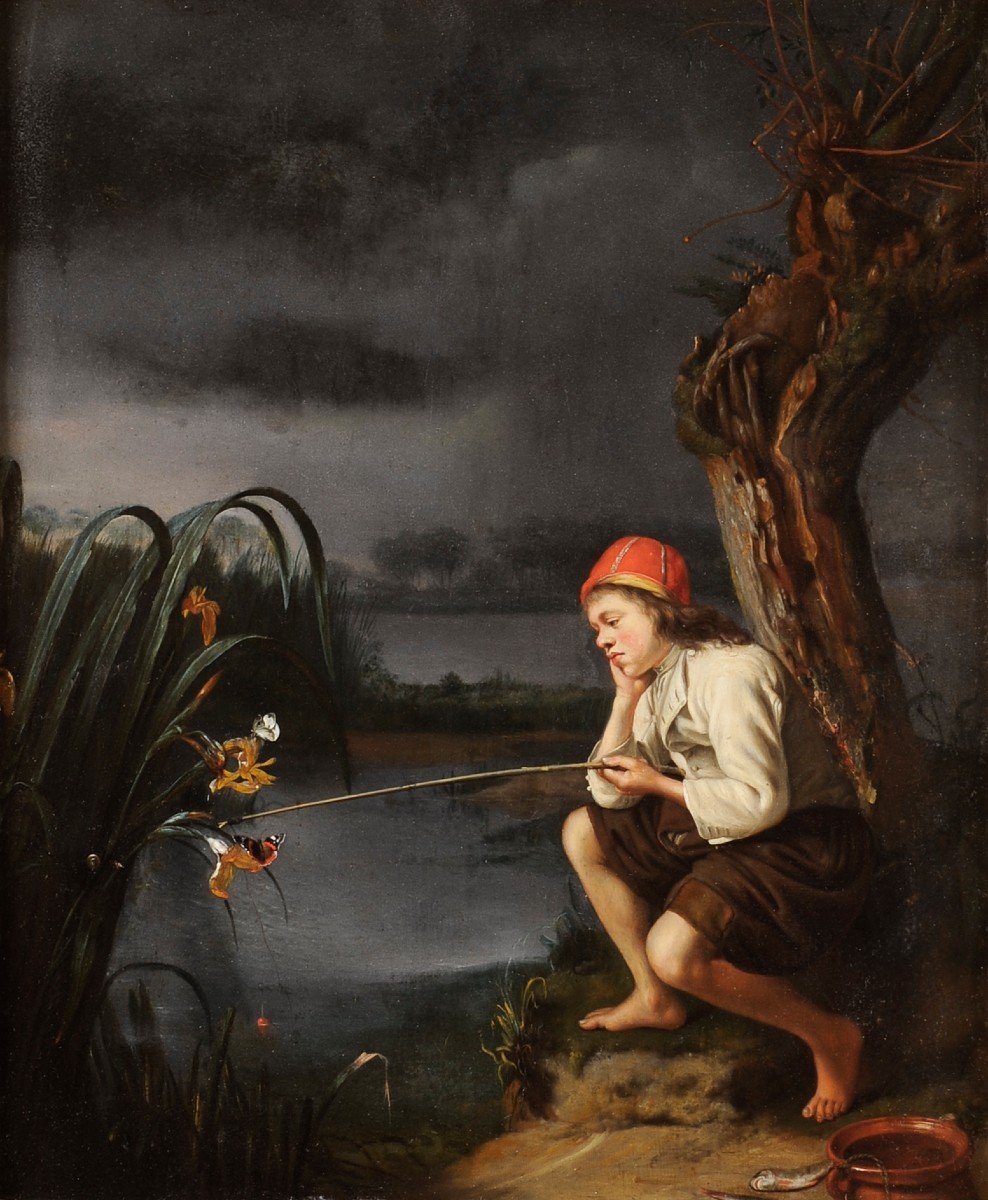
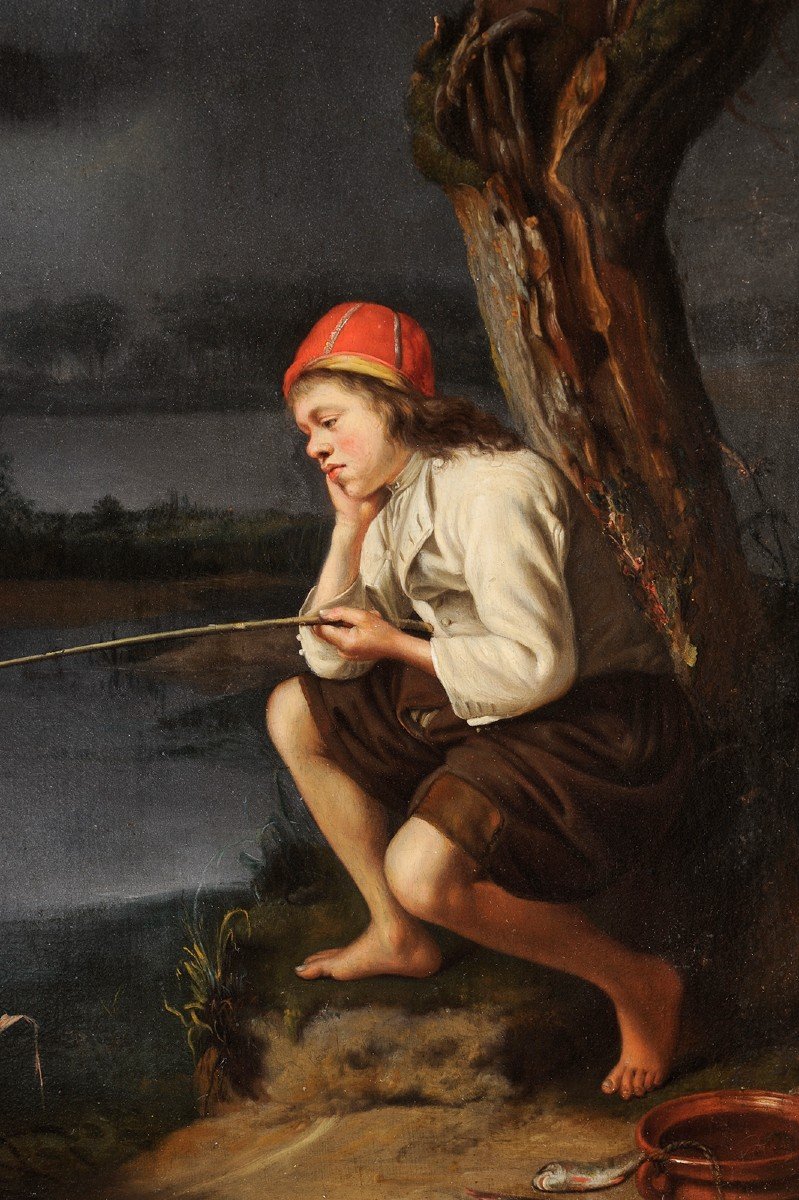
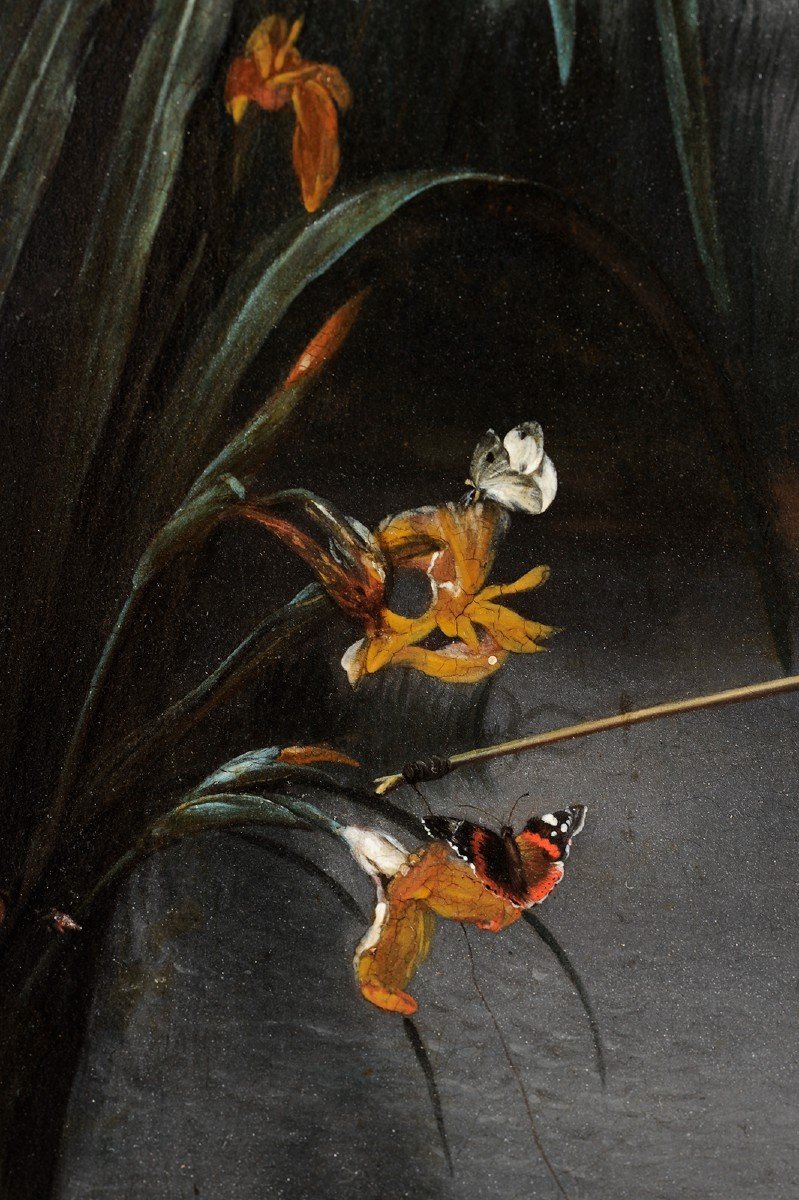

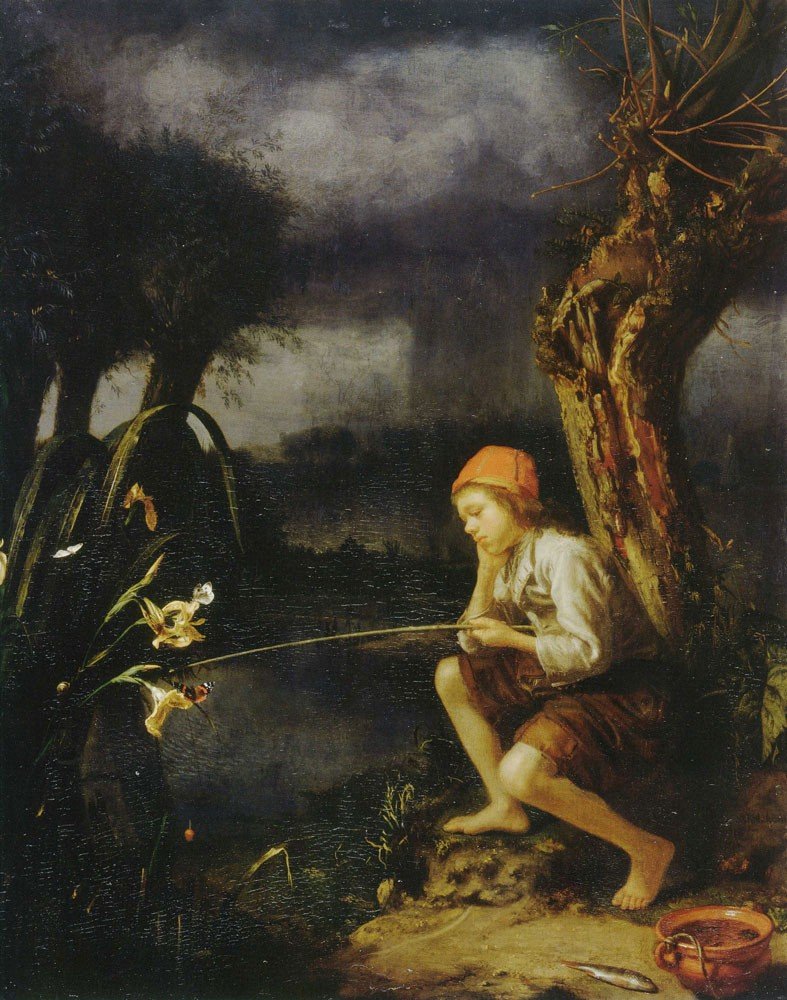











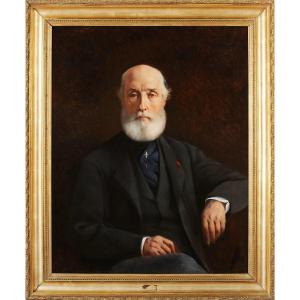
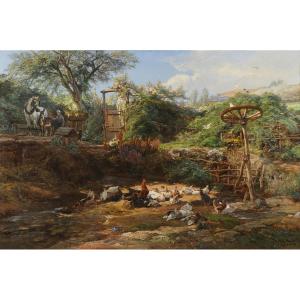









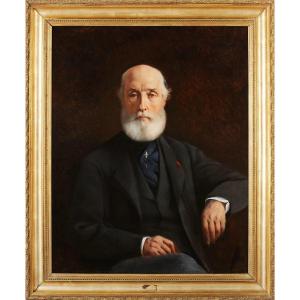
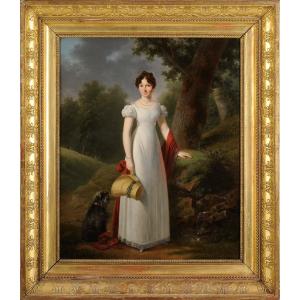

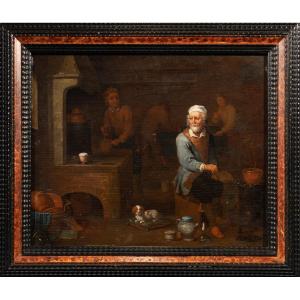
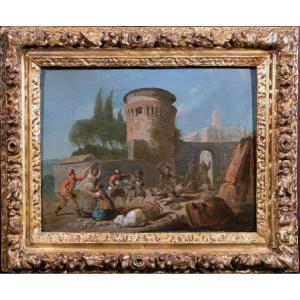
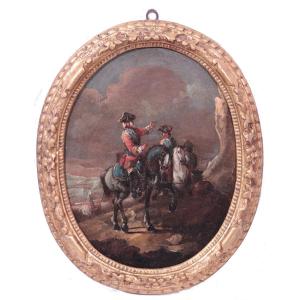




 Le Magazine de PROANTIC
Le Magazine de PROANTIC TRÉSORS Magazine
TRÉSORS Magazine Rivista Artiquariato
Rivista Artiquariato